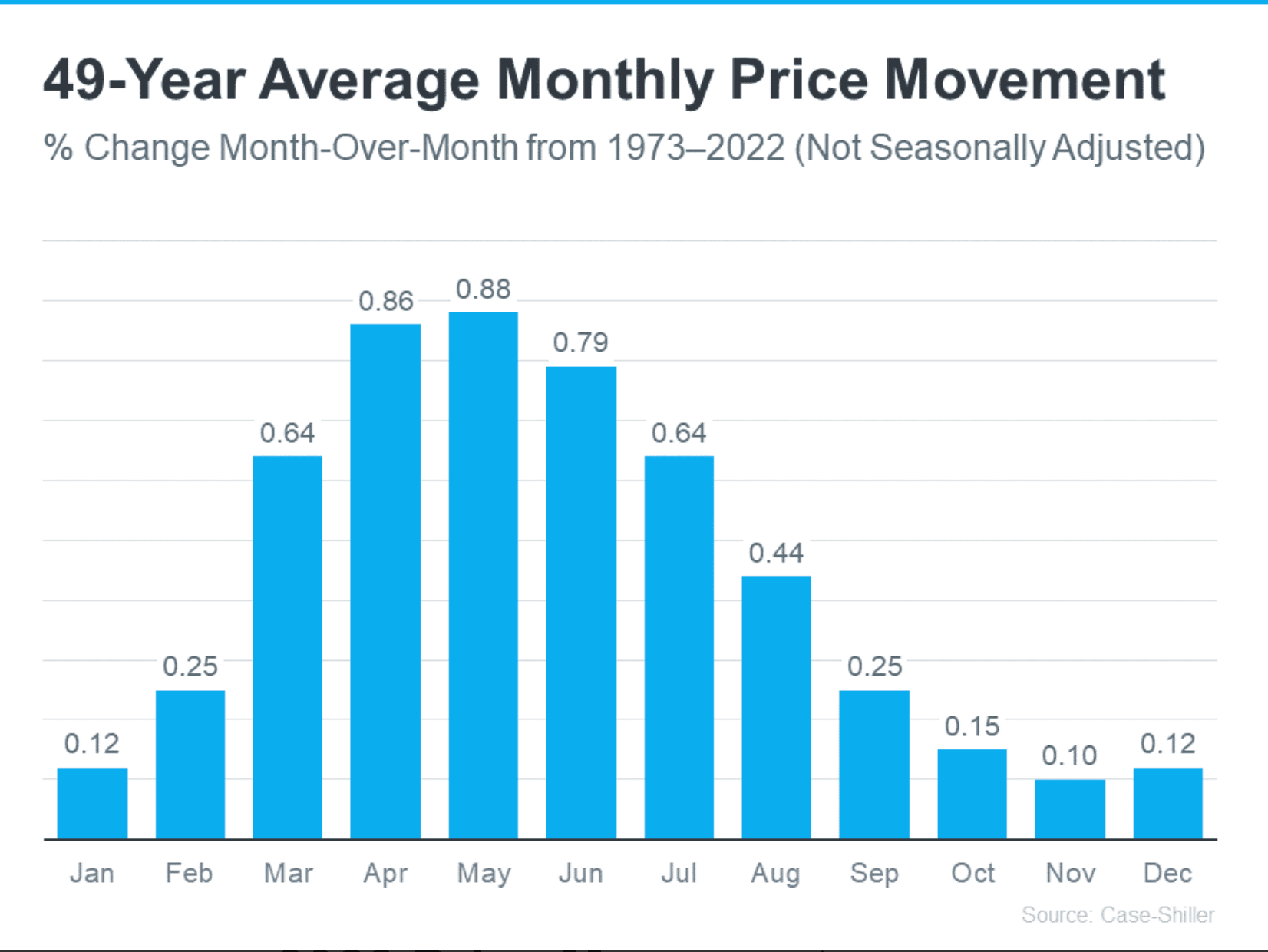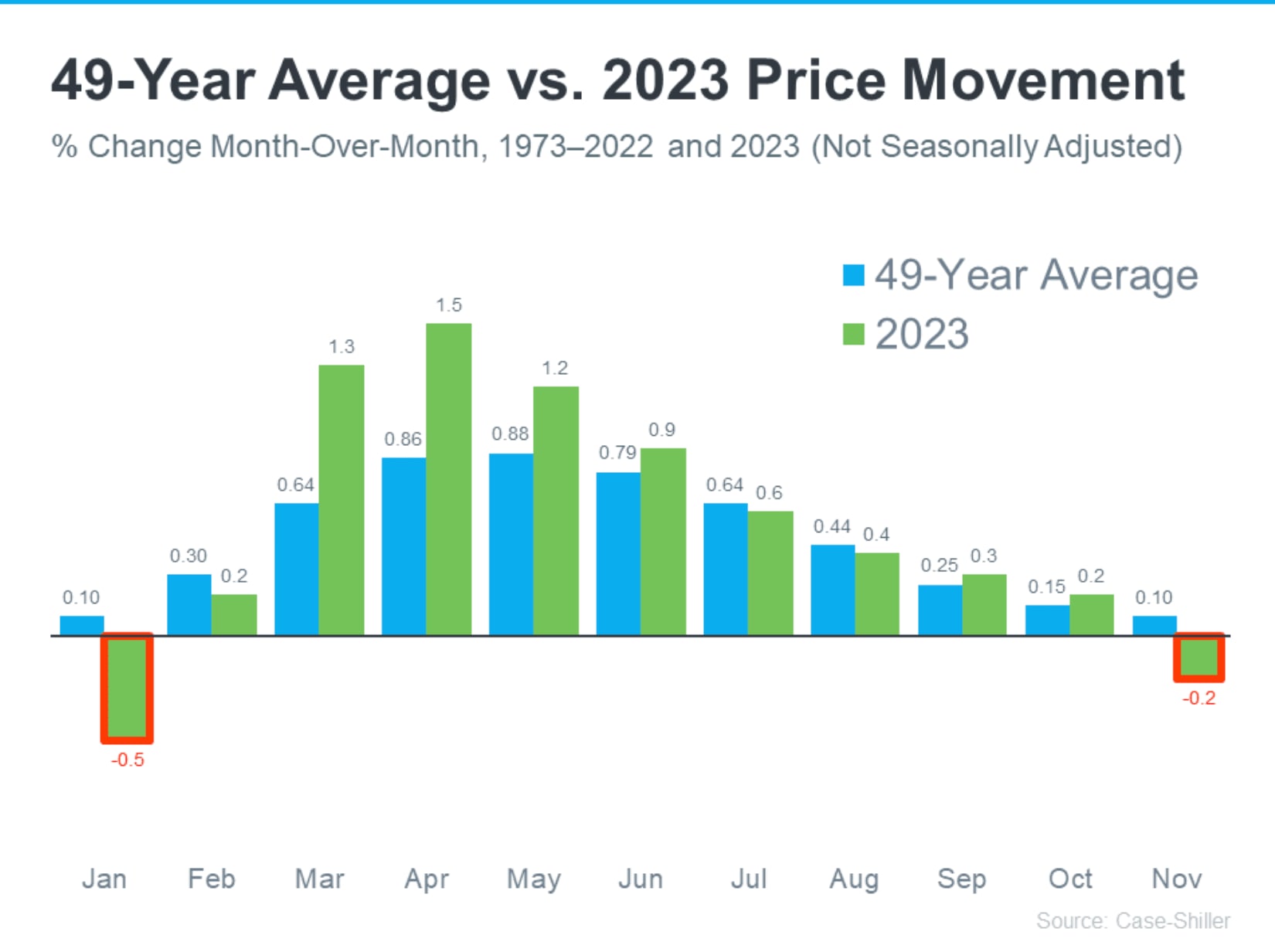The news might have you worried about falling home prices, but the headlines don't tell the whole story.
National data from 2023 actually indicates positive growth in home prices for the year. While this can vary by market, and there were occasional slight declines nationally, these were exceptions rather than the rule.
In essence, the overarching narrative is one of increasing prices last year, not a decrease. Let's delve into the data to clarify.
2023 Saw a Return to Typical Home Price Growth
If anything, last year signaled a return to more customary home price appreciation. To illustrate, let's consider the usual patterns in residential real estate.
The housing market typically experiences predictable fluctuations throughout the year, known as seasonality. Spring marks the peak homebuying season, with robust market activity. This momentum often carries through the summer before gradually tapering off towards the year's end. Correspondingly, home prices tend to follow suit, rising most during periods of high demand.
The graph below, utilizing Case-Shiller data from 1973 to 2022 (without adjustments for clarity on seasonality), demonstrates this pattern:
As evident from the data, home prices have adhered to typical market seasonality for almost five decades. At the start of the year, prices tend to grow moderately as market activity slows in January and February. Then, as spring ushers in the peak homebuying season, both activity and prices surge. Subsequently, as autumn and winter approach, activity eases, and prices continue to grow, albeit at a slower pace.
Now, let's overlay the available 2023 data (shown in green) onto this long-term trend (shown in blue) for comparison:
As depicted, the level of appreciation observed in 2023 more closely aligned with the long-term trend seen in the housing market. This is evident in the convergence of the green bars with the blue bars towards the latter part of the year.
However, the headlines predominantly focused on two bars highlighted in red. Here's the context that may have been overlooked, providing perspective on these fluctuations. The long-term trend indicates that it's typical for home prices to moderate during the fall and winter months due to seasonality. Additionally, since the 49-year average during those months is close to zero (0.10%), slight drops in prices are not uncommon. Yet, these are merely blips on the radar. When considering the entire year, home prices still experienced an overall increase.
What You Should Keep in Mind
Headlines tend to emphasize minor month-to-month fluctuations rather than the broader year-long trend, potentially leading to misconceptions.
Remember, last year witnessed a return to seasonal patterns in the housing market – a positive development following the unsustainable surge in home prices during the pandemic's peak years.
And if concerns persist about declining home prices, there's reassurance in the expectation for continued appreciation this year. With mortgage rates trending lower compared to last year, coupled with increasing buyer demand and a limited supply of homes for sale, upward pressure on prices is anticipated to persist.
In Conclusion
Don't let headlines about home prices confuse you. The data indicates that, overall, home prices increased in 2023. If you have questions, contact us to learn more about your local market.
Article courtesy of Keeping Current Matters
Graphs: Case-Shiller






